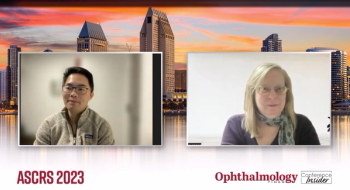
Alvin Liu, MD, sat down with Sheryl Stevenson, Group Editorial Director, Ophthalmology Times®, to discuss his presentation on deep learning and 3D OCT at the ASCRS annual meeting in San Diego.

Alvin Liu, MD, sat down with Sheryl Stevenson, Group Editorial Director, Ophthalmology Times®, to discuss his presentation on deep learning and 3D OCT at the ASCRS annual meeting in San Diego.

Mark Packer, MD, sat down with Sheryl Stevenson, Group Editorial Director, Ophthalmology Times®, to discuss his presentation on machine learning and predicting vision outcomes after cataract surgery at the ASCRS annual meeting in San Diego.

APP13007 is used for the treatment of post-operative inflammation and pain following ocular surgery.

According to the company, outcomes show the potential for its modular, shape changing lens system.

The laser and scanner are completely integrated into a single delivery device that attaches to compatible slit lamps.

David Wallace, MD, MPH, the Marilyn K. Glick Professor and chair of the Department of Ophthalmology for Indiana University School of Medicine, is new chairman of Ophthalmology and Visual Sciences and director of the Vanderbilt Eye Institute for Vanderbilt University Medical Center.

A study of ChatGPT found the artificial intelligence tool answered less than half of the test questions correctly from a study resource commonly used by physicians when preparing for board certification in ophthalmology.

According to the company, BRIMOCHOL PF met its prespecified FDA primary endpoint for binocular near visual acuity across multiple time points, starting at hour 1, versus active controls, and was well-tolerated with no significant adverse events.

ZEPTOLink will be introduced at the American Society of Cataract and Refractive Surgery (ASCRS) Annual Meeting in San Diego.

According to the company, clinical trials of the ophthalmic gel showed that patients treated with IHEEZO did not require any supplemental treatment to complete the intended surgical procedure. Harrow will host several launch events at the 2023 American Society of Cataract and Refractive Surgery annual meeting being held May 5-8, 2023, in San Diego, California.

Eyecelerator kicks off today as the American Society of Cataract and Refractive Surgery will host this year’s ASCRS and ASOA Annual Meeting in San Diego, California, beginning on Friday. ViaLase Inc., Aurion Biotech among companies presenting at the annual meeting.

Surgeon details training, experience with procedure that offers hope to patients.

Horizon recently received an updated indication for TEPEZZA to specify its use in patients with TED, regardless of disease activity or duration, coming after the company released positive topline results from the phase four clinical trial of patients with chronic TED.
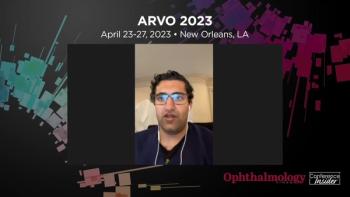
Ravi Parikh, MD, MPH, sat down with David Hutton, Managing Editor, Ophthalmology Times®, to discuss his presentation about adopting dropless cataract surgery to help reduce cost to both patients and the healthcare system at this year's ARVO meeting.
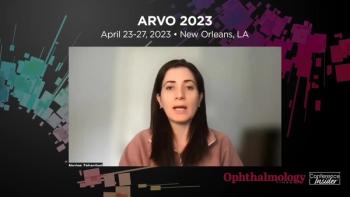
Nazlee Zebardast, MD, MSc sat down with David Hutton, Managing Editor, Ophthalmology Times®, to discuss her research on using machine learning methods to identify image-based, specifically OCT based, phenotypes or structural phenotypes for glaucoma. at this year's ARVO meeting.


Eric Mikula, PhD, from ViaLase sat down with David Hutton, Managing Editor, Ophthalmology Times®, to discuss the company's femtosecond laser image-guided high-precision trabeculectomy, FLigHT, for non-incisional glaucoma treatment at this year's ARVO meeting.

The Florida Inventors Hall of Fame is celebrating 10 years and will induct 10 inventors, including William W. Hauswirth, PhD, who developed a gene therapy drug to treat children and adults with inherited retinal disease.
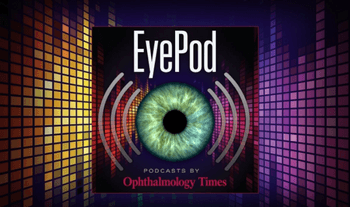
David Hutton from Ophthalmology Times and Jay Duker talk about wet AMD and the burdens of treatment on patients thanks to the consistent need for follow-ups and more.

Ram Kannan, PhD, FARVO, principal investigator and adjunct professor of Ophthalmology at David Geffen School of Medicine, UCLA, Doheny Eye Institute, made a pair of presentations at the Association for Research in Vision and Ophthalmology annual meeting in New Orleans. He offers some of the highlights in a conversation with Ophthalmology Times.

Vitrectomy, lensectomy remain the primary surgical approaches for condition.
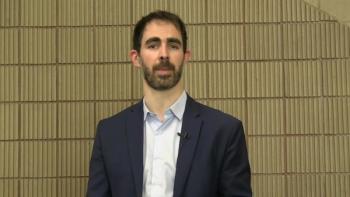
Ophthalmology Times® talked with Carlos Ciller, PhD, the co-founder and CEO of RetinAI, about technological advances the company is making to drive innovation and to accelerate drug development pipelines at this year's ARVO meeting.

Ophthalmology Times® talked with Kaustubh Ghosh, PhD, about lysyl oxidase, a recently discovered molecule that causes the blood vessels in the eye to become stiffer at this year's ARVO meeting.


These three FDA-approved ophthalmic medicines, which are now commercially available under the Harrow umbrella, were among the five products that Harrow purchased in January of 2023.
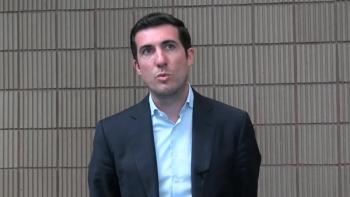
Ophthalmology Times® talked with Alfonso Sabater, MD, PhD where he discusses a patient case of his with epidermolysis bullosa at this year's ARVO meeting.

Ophthalmology Times® talked with AnnMarie Hipsley, DPT, PhD, about 3D finite element model used to understand more about the biomechanics of accommodation and dis-accommodation as it relates to functions for visual function as well as aqueous hydrodynamics at this year's ARVO meeting.

This year’s event will offer attendees both new and returning special events and features.

Ophthalmology Times® talked with Darius Moshfeghi, MD, about BUTTERFLEYE data trial results using aflibercept versus laser for the treatment of retinopathy of prematurity this year's ARVO meeting.

Efavirenz boosts cholesterol turnover in retina, brain.